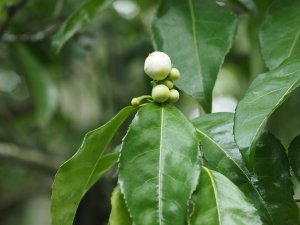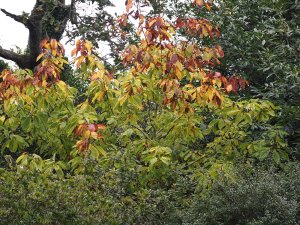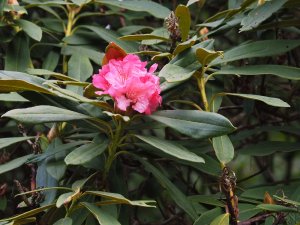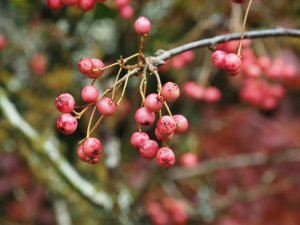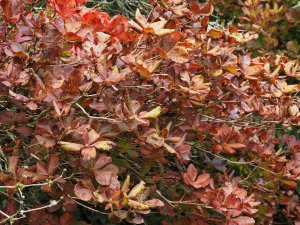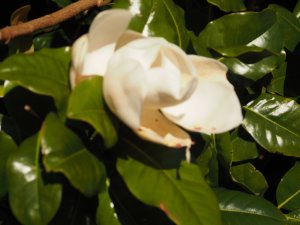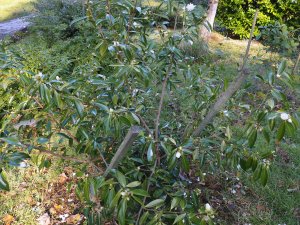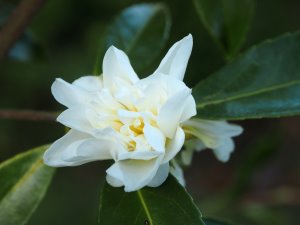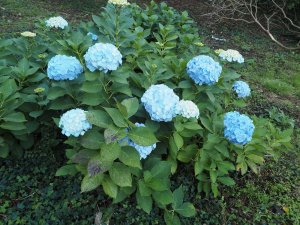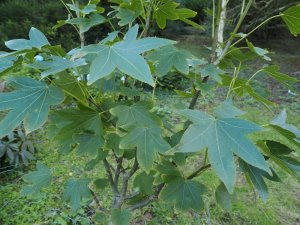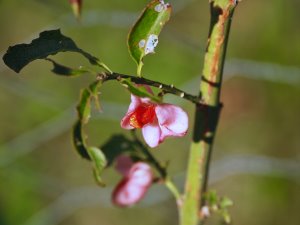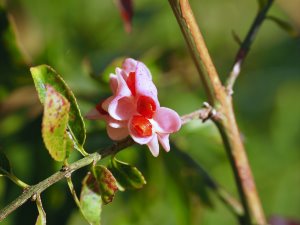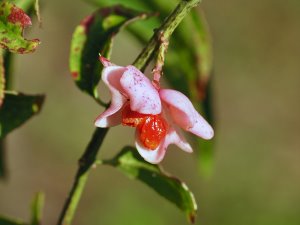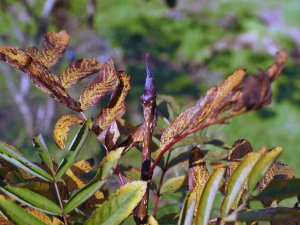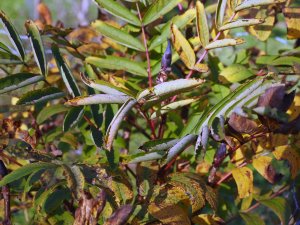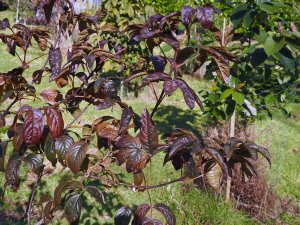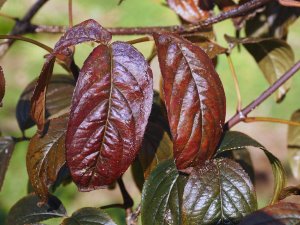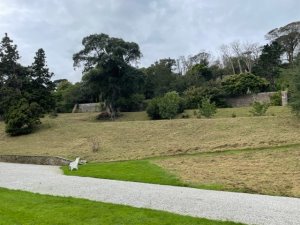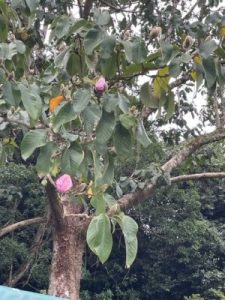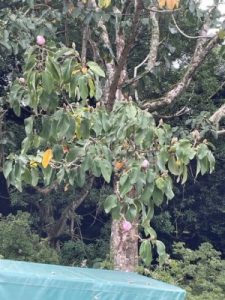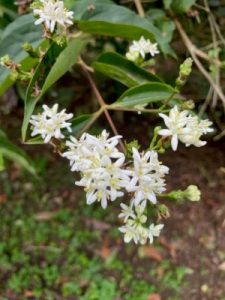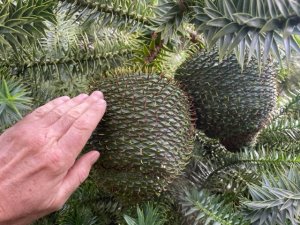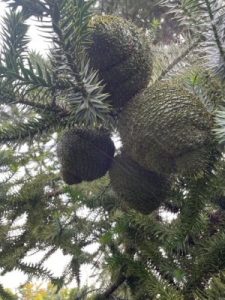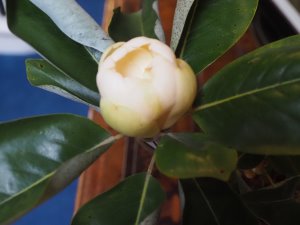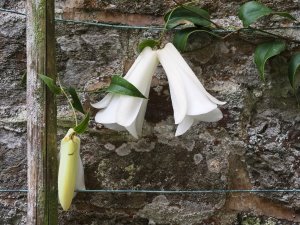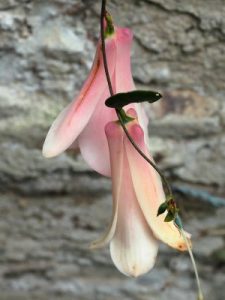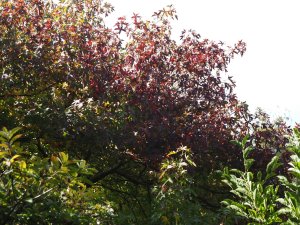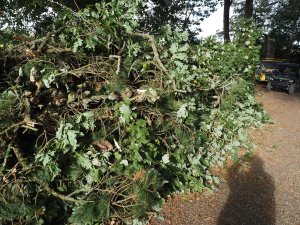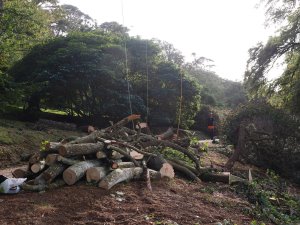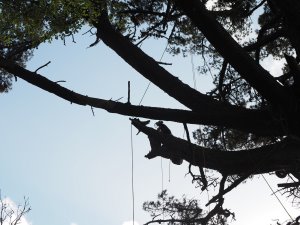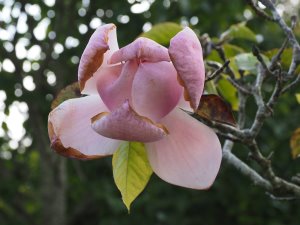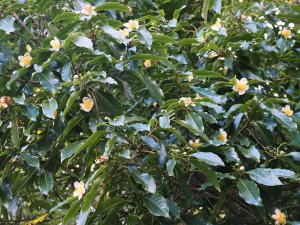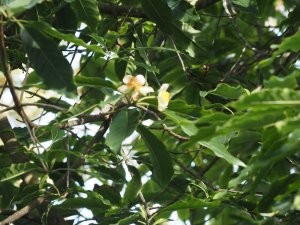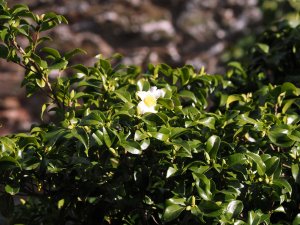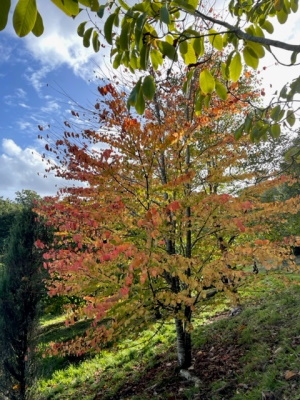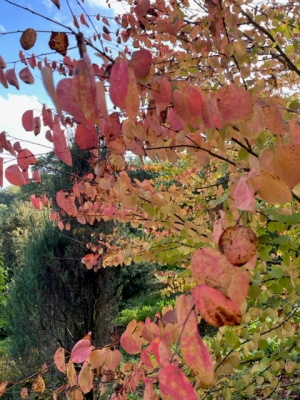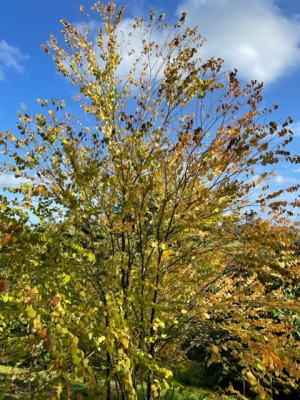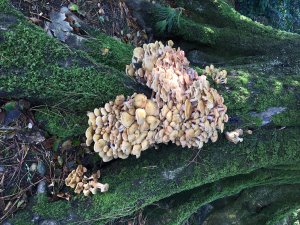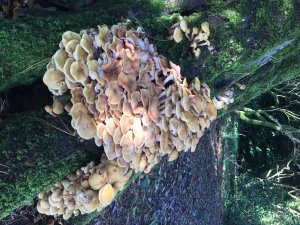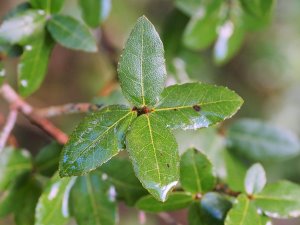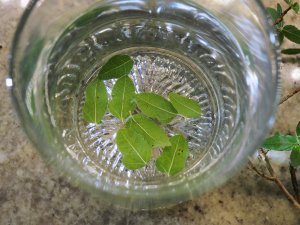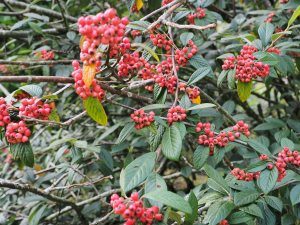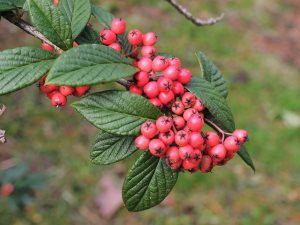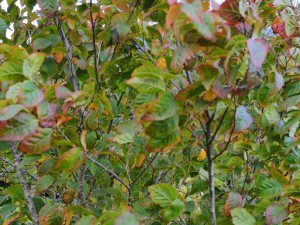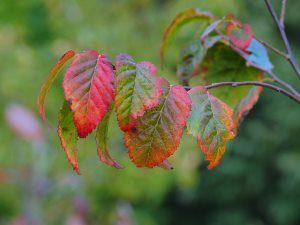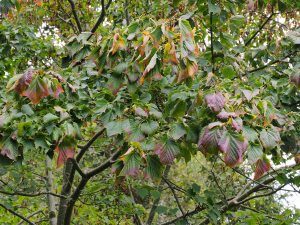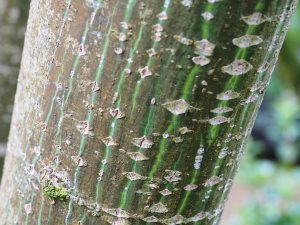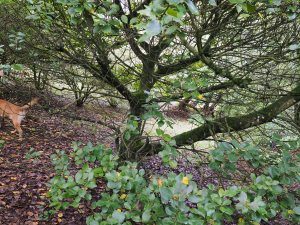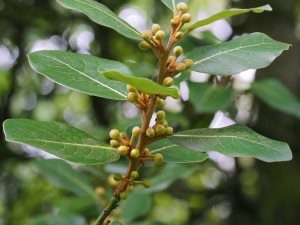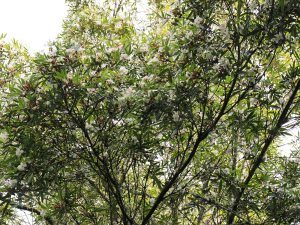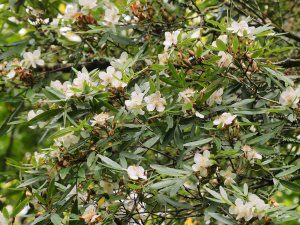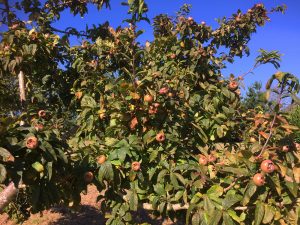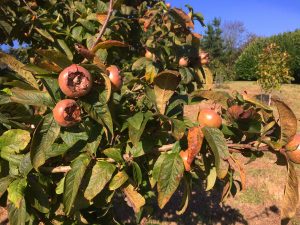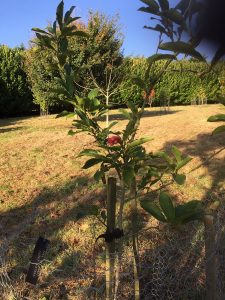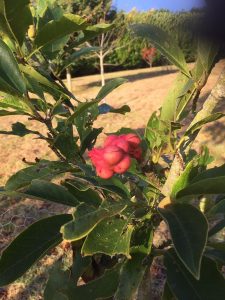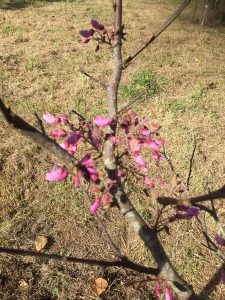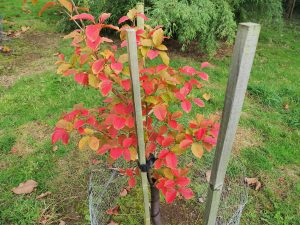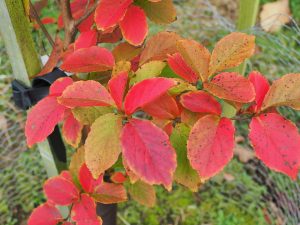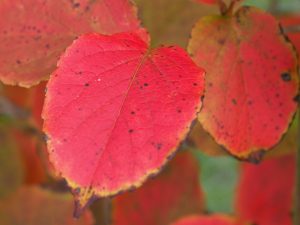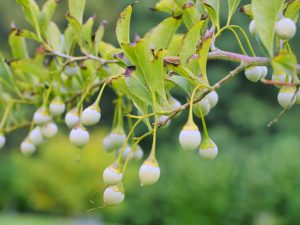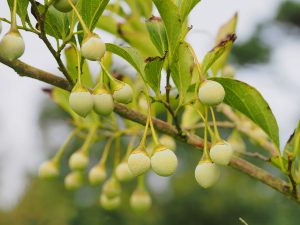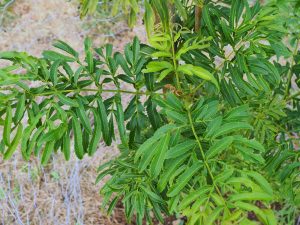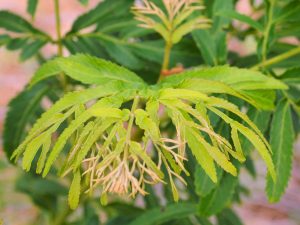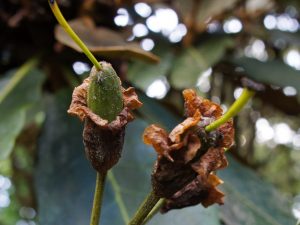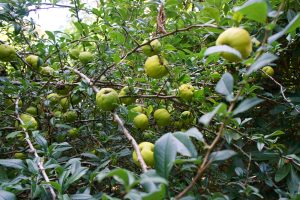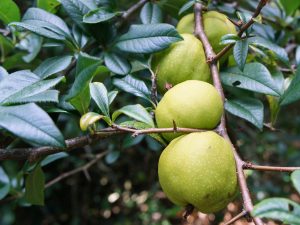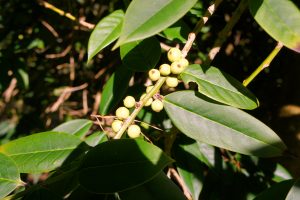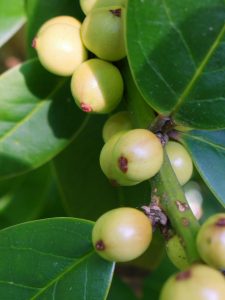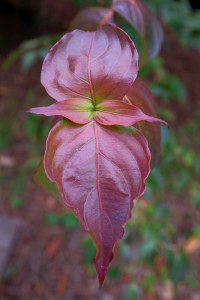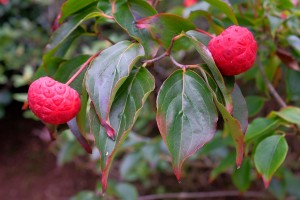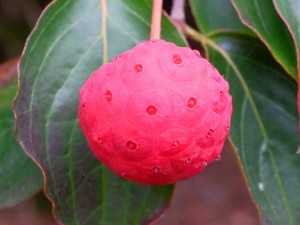2025 – CHW
Acer palmatum ‘Osakazuki’ turning colour on the drive.
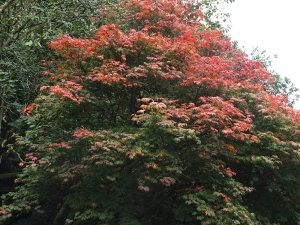
Much colder but bright sunshine for a change.Magnolia grandiflora ‘Galissonniere’ catching the sun.
The Eden Project have spent 6 weeks trying to come here to collect the wildflower seeds on the banks. We have finally given up and cut them. Sadly we will have cut off many cyclamen flowers in the process.
The Liquidambar’s start to turn colour.
2021 – CHW
A letter from Duncan Donald with a welcome box of bulbs of Narcissus ‘White Star’ bred by JC Williams and, until now, lost to cultivation.
2020 – CHW
I got the identification of the fungus at Burncoose totally wrong a few days ago. It was of course not a ‘Tuft’ but, in fact, Honey Fungus. Much like the fungi growing in these pictures on an elderly beech which may have to be felled. Armillaria mellea.
Doing a bit of research on Sunday I think that what we have growing as Schinus polygama is correctly named. I also think that Melicytus crassifolius is likely to be correctly named despite the shape of its leaves. Although we have never seen yellow flowers or white berries the growth habit of the plant seems to marry up and the leaf shape seems to be a bit variable in the reference articles online. Not listed in Bean or New Trees.
I am fairly sure that I have planted Schinus latifolius and Schinus molle here in the past and the nursery once stocked a few of the latter. This causes me to think that one of the unnamed plants below Tin Garden may well be Schinus latifolius which Bean says is closely allied to S. polygama but without the spine tips on its twigs/branches with ovate or elliptic leaves. Certainly it is different from the Schinus polygama growing above the greenhouse especially as regards the leaf shape and the lack of such pronounced spine tips. Bean says however that S. latifolius has larger leaves than those shown below.
S. latifolius leaves, when placed in water “after a short time, will start to start and jump as though they were alive, while at the instant of each start a jet of oily matter is discharged into the water. Thus we have in every leaf a sort of vegetable battery which will keep up its fire until the stock of ammunition is exhausted” (Lindley).
I had better put this to the test!
There was zero movement at first but tiny movements on the smallest leaves after a few minutes. Perhaps, or did I imagine this? Perhaps the ‘jumping’ only occurs when the new leaves are formed in the spring?I fear this is not Schinus latifolius but it was a nice experiment!
Cotoneaster franchetii with its usual display below the tower. These fruits get carried by birds and mammals into cavities in walls and under slates capping walls where they grow and are both a nuisance and hard to dig out properly.
Mespilus germanica in Kennel Close is absolutely laden with fruit which are approaching being ripe. I need to investigate how one should begin to eat these but believe they are best turned into jam?
The young Stewartia henryae has superb red autumn colour for the second year after planting. None of the other stewartia species do this with us. I bought this from Esvelt and we must plant more!
More seed investigations today. Rhododendron eximium has set a few seeds on each truss but many of the flower trusses have now dropped their seed heads which had not set and have simply dropped off. Those few which have set and swollen are still far from ripe.
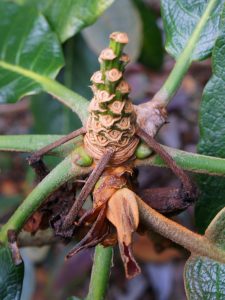
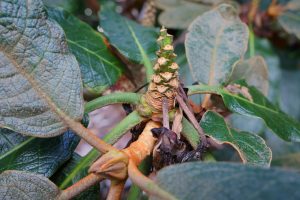
2015 – CHW
Some fruit and nice autumn colour on Cornus kousa var chinensis ‘Wisley Queen’. The fruiting is irregular and confined to a few branches.
Corylopsis ‘Spring Purple’ has as good an autumn display as its spring bronzy leaves. This early leaf bronzing is seldom seen in small young plants in pots.
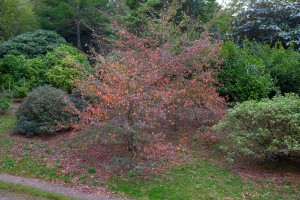
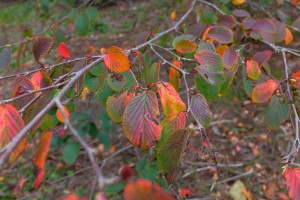
1947 – CW
Returned from Scotland. Very dry and rain badly wanted. Rho Yellow Hammer very good. Lapagerias nice. All the Rho auriculatum hybrids over. Hydrangeas good. Fuchsias very good.
1926 – JCW
There is nothing better in the place than Clematis panniculata. The fuchsia in the New Planting has flowers. Very little else in bloom.
1924 – JCW
Returned from Scotland last night. A wet cool summer. Most rhodo’s did very well and so did most of the shrubs. Some rhodo’s dead all the same. Not as many flower buds as we hoped but better than last year.
1914 – JCW
Hydrangeas going off. C panniculata good. Solanum nice. Cyclamen fair. Belladonnas very good indeed.
1907 – JCW
Returned from Scotland. Hydrangeas are the best thing. Cyclamen are very good. Roses bad, it has been a cold year, but good for rhodo’s. C panniculata good.
1904 – JCW
Returned from Scotland, have been away for 3 months. The Lithospermum of Sir Francis is the best thing out. Solanums, woodwardias, cassias, musas, lemon plant are all nice. Clematis panniculata promises well. Cyclamen very nice.




